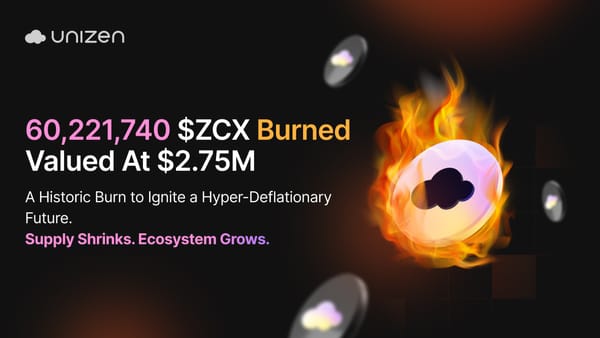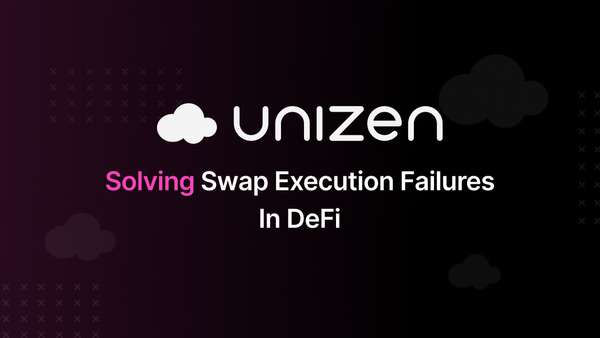What Is Fully Diluted Market Cap?
Understand what a fully diluted market cap is and its importance in cryptocurrency. Learn to calculate and compare it to market cap to assess a project's potential.

Fully Diluted Market Cap, also known as Fully Diluted Valuation (FDV), is a prediction of a cryptocurrency market capitalization, assuming all potential tokens are in circulation. It is a crucial metric that could influence a cryptocurrency's actual market cap, giving you a snapshot of the maximum market capitalization it could reach.
In simple terms, how does FDV allow a broader perspective on the potential of the crypto market so that you can give a more balanced comparison between different cryptocurrencies, especially those with different circulating supplies? The 'Fully Diluted Market' concept is for investors who want to manage and understand their investment risks and long-term potential in different crypto projects.
Understanding Fully Diluted Market Cap
Fully Diluted Market Cap estimates the total potential value of a cryptocurrency by considering not only the tokens in circulation today but also those that could be released in the future. Let's give an example of a new cryptocurrency project with a current market cap of $50 million and an FDV of $500 million. The new project seems small now, but you'll see that its FDV is signaling that it could become as big as the mature project. However, you'll also notice a large gap between the current market cap and FDV, which suggests that the project is overvalued, as it assumes that all future tokens will have the same high value.
In the crypto market, not all tokens are available immediately. Most times, developers reserve a portion of tokens for future release, or they may be distributed over time through mining or staking rewards. FDV gives you an idea of the cryptocurrency's market cap if all of these reserved or undistributed tokens were circulating.
Calculating Fully Diluted Market Cap
FDV calculates the maximum supply of tokens, including those not in circulation:
FDV = Maximum Supply of Tokens × Current Price per Token
Maximum Supply of Tokens is the total number of tokens that will exist. This number is usually fixed for many cryptocurrencies (for example, Bitcoin has a maximum supply of 21 million coins).
The current Price per Token is the price each token trades in the open market. When you multiply the supply of tokens and the current price per token, you get an idea of the cryptocurrency's value if all tokens are circulated.
Let's quickly evaluate a cryptocurrency called X. 'There are 10 million 'X' tokens in circulation, each traded at $5, and the maximum supply of 'X' tokens is 100 million.
Now, let's calculate Fully Diluted Valuation:
FDV = Maximum Supply of Tokens × Current Price per Token
FDV = 100 million × $5
FDV = $500 million
If all 100 million X tokens were circulating today, the cryptocurrency would have a market value of $500 million.

Comparison Between Fully Diluted Valuation and Market Cap
Market Capitalization (Market Cap) is another critical metric used to evaluate a cryptocurrency's maximum value. Although they provide very different perspectives, Market cap and FDV are essential.
What is Market Cap?
Market Cap refers to a measure of the current market value of a crypto asset based on the number of tokens already in circulation. It gives you an idea of tokens currently available in the market and how the market values the project. In other words, market cap uses circulating supply, whereas FDV uses total supply.
Market cap is calculated by multiplying the current price by the supply being circulated.
Market Cap = Circulating Supply × Current Price per Token
The circulating supply is the number of tokens that are actively available for trading in the market. It is essential because it shows the demand and availability of the cryptocurrency.
For example, if a cryptocurrency has 10 million tokens circulating, and each token is priced at $5, the present market cap would be:
10 million × $5 = $50 million
This $50 million represents the current value that the market places on this project based on the supply that is being traded.
Key Differences Between FDV and Market Cap
While market cap provides a snapshot of the current value, Fully Diluted Market Cap (FDV) further looks at the bigger picture.
We'll be listing a few major differences between the two metrics:
1. Circulating vs. Total Supply
One of the key differences between the total market cap and fully diluted market cap is how they factor in the supply of 'tokens.' Market cap only considers the circulating supply, referring to the tokens currently available for trading. This is why the market cap reflects a cryptocurrency's current value.
A fully diluted market cap of crypto considers the total supply of tokens. The tokens include those that haven't been released yet, like those locked up for future market use or those that will be mined or distributed over time.
2. Forward-Looking Estimate vs. Current Market Sentiment
Market cap gives you a sense of the current market sentiment, which is how much investors value cryptocurrency. The immediate supply and demand are based on the actively traded tokens.
Fully Diluted Valuation provides a more forward-looking estimation. It projects the cryptocurrency's total value if all the tokens are circulating and worth the current market price. FDV is also very speculative in that, while it gives insight into the future worth of a project, it already assumes that all future tokens will be valued the same as those currently circulating, which might not always be the case.
In the simplest terms, FDV is more long-term, while the market cap is focused on the here and now.

How FDV Helps Investors Assess Long-Term Potential and Risks
FDV allows investors to gauge the potential of a cryptocurrency project beyond where it is. This is particularly important in crypto, where token supply is often released gradually. By calculating the Fully Diluted Market Cap, you can assess the maximum possible value a project could achieve, assuming all its tokens are released and maintain the current price.
Here's why FDV in crypto is so valuable for assessing the long-term potential and risks of a cryptocurrency:
1. Understanding Potential Growth
Investors can get a clearer sense of how large a project could grow. While the market cap shows the current value of a project, FDV shows the total value, which could be once all tokens are in circulation.
2. Evaluating Supply Inflation Risk
A significant risk in cryptocurrency investment is token supply inflation. When a project has many unreleased tokens that will eventually add to the circulating supply, this can dilute the value of each token. This is where FDV is particularly useful; it gives you a sense of how much dilution could occur as more tokens are introduced to the market.
3. Risk of Overvaluation
FDV also helps investors identify overvaluation risks. If a project's current market cap is small compared to its FDV, but the future supply of tokens is ample, it may indicate that the market is overly optimistic about the project's long-term prospects.
Situations Where FDV is Particularly Useful
FDV is especially useful in specific situations, particularly when projects have a large portion of tokens that are yet to be released. Here are a few scenarios where FDV becomes an essential metric for investors:
1. New or Early-Stage Projects
Some tokens are often locked or scheduled to be released over time for new or early-stage cryptocurrency projects. In these cases, FDV provides a more complete picture of the project's future value than the market cap alone.
Let's say a project has only released 10% of its tokens, but the remaining 90% will be gradually introduced over the next few years. While the market cap might look appealing at first glance, FDV will reveal the full extent of the token supply and help investors assess whether the project's potential growth justifies its current price.
2. Projects with Staking or Mining Rewards
A high, fully diluted market cap becomes crucial for understanding the long-term outlook in projects that rely heavily on staking or mining rewards. As more tokens are mined or earned through cryptocurrency staking, the circulating supply increases, and FDV helps investors predict how these additional tokens will affect the overall value.
A blockchain project that rewards participants with newly minted tokens, the current market capitalization might look small, but understanding what is fully diluted market cap reveals the impact of future token issuance. If the FDV is significantly higher, it could indicate that the project's tokenomics might lead to price dilution over time.
Pros and Cons of Using Fully Diluted Market Cap (FDV)
Let’s look at some of the pros and cons of Fully Diluted Market Cap.
Pros
- Comprehensive Evaluation: FDV provides a broader perspective on a cryptocurrency's long-term potential. By considering all tokens that could eventually enter circulation, FDV allows investors to know how big a project could grow. For example, if a cryptocurrency currently has only a fraction of its total supply in circulation, its market cap might not reflect its true potential. Investors would move beyond the present and factor in the future growth of the token supply. It's helpful for early-stage projects, where most tokens are locked or have not yet been released. With FDV, you can project the total value the project might achieve, assuming all tokens maintain their current price.
- Useful for Long-Term Investment Strategies: If you want to adopt a long-term investment strategy, then FDV is for you. Since it provides a forward-looking estimate, it's valuable for investors who want to assess a project's potential over time rather than focusing solely on its present value. FDV enables investors to weigh the future supply of tokens and how it might impact the value of their investment.
- Risk Assessment: FDV also plays a crucial role in risk assessment, giving you a sense of the future supply and how it affects the price of tokens. As more tokens are introduced to the present market, this increase in supply can put downward pressure on prices. By understanding the FDV, investors can anticipate the potential effects of dilution on their holdings.
Cons
- Overestimation of Value: One of the critical limitations of FDV is that it assumes all tokens will eventually be released into circulation, which might not always happen. Some projects may have permanently locked or reserved tokens for specific purposes, such as governance or platform functionality, and they might never enter the market. The project's future value can be overestimated if these tokens are included in the FDV calculation.
- Does Not Account for Market Dynamics: Fully Diluted Market Cap does not account for market dynamics such as the supply of a crypto asset and demand changes, which can significantly impact a cryptocurrency's price. FDV assumes that all future tokens will be valued at the same price as current tokens, which is often unrealistic. As more tokens enter the market, supply may increase faster than demand, causing prices to fall.
- Over-Optimistic Expectations: Using FDV exclusively can lead to having optimistic expectations about a project's potential. Since FDV doesn't consider the practical challenges of growing demand or the complexities of releasing more tokens, it might give the impression that a project is for exponential growth when, in reality, its actual trajectory could be more subdued.
Practical Applications of Fully Diluted Market Cap (FDV)
Fully Diluted Market Cap (FDV) is an excellent tool for evaluating the potential value of a cryptocurrency project, but it is not a stand-alone metric. Investors should use a Fully Diluted Market Cap with other essential factors to make sound investment decisions. This section will explore the practical applications of FDV, demonstrating how it can be leveraged effectively, especially when combined with market cap, project fundamentals, and overall market conditions.
Using FDV Alongside Other Metrics
One of the critical strengths of FDV is its ability to provide a forward-looking estimate of a cryptocurrency's total potential market value. However, relying solely on FDV can be misleading because it doesn't account for current market realities. Instead, investors should combine FDV with other metrics to better understand a project's value and potential.
Comparing FDV with market capitalization is also a fundamental step for any investor. The market cap significantly shows the current value of a project based on its circulating supply, while FDV considers the total supply of tokens. If the FDV is significantly higher than the market cap, it can indicate that many tokens are yet to be released, which could lead to dilution and downward pressure on the token's total market price.
Considering Project Fundamentals Along With FDV and Market Cap
Understanding what a fully diluted market cap is is useful but must be viewed in the context of a project's fundamentals. Before making any investment decisions, it's essential to evaluate whether a project has the real-world use cases, development team, and growth strategy to support the kind of future valuation suggested by its FDV. A high FDV might be appealing, but if the underlying project lacks substance, it's unlikely that the market will maintain the token's value as more tokens are released.
1. Analyzing Market Conditions
Another critical factor to consider when using FDV is the broader market conditions. A crypto investment is volatile, and FDV can be a helpful tool for anticipating how external factors might affect the price of a token when more tokens are released. For instance, if the overall market is falling and demand is low, an upcoming token release could flood the market, causing a sharp drop in the token's price.
By contrast, during bull markets, when there is a lot of enthusiasm and demand for new tokens, releasing more tokens may not have as much of a negative impact. In such cases, FDV might not be as concerning, as increased demand can absorb the extra supply. Understanding the cyclical nature of cryptocurrency markets can help investors make more intelligent decisions when considering FDV. Timing is critical in determining whether a project will live up to its fully diluted potential.
2. Long-Term vs. Short-Term Strategies
FDV can also be particularly useful for distinguishing between long-term and short-term investment strategies. For long-term investors, FDV offers valuable insight into where a project might be heading and how big it could become once all tokens are circulated. This indicates a project's scalability and potential longevity, assuming the project's fundamentals are sound.
However, FDV may be less relevant for short-term traders since they focus more on the current market cap and immediate price movements. Short-term traders are typically concerned with quick gains and volatility, making the circulating supply and current market conditions more critical than a long-term metric like FDV.
3. Assessing Supply and Demand Dynamics
FDV also provides insight into the supply and demand dynamics of a project. A project with a high FDV compared to its current market cap could face challenges when it releases more tokens, as this increases supply. Investors should ask whether the project has the demand to sustain its price as the token supply expands.
For example, if a project currently has 20% of its total supply in circulation and plans to release the remaining 80% over time, this could lead to a supply glut, pushing the price down unless the project can significantly increase demand. By considering FDV, investors can anticipate the impact of upcoming token releases and assess whether a project's demand will grow in line with its supply.
Conclusion
Ultimately, understanding what is a fully diluted market cap is just one piece of the puzzle. It’s a tool for projecting what a project could become if it lives up to its full potential, but real-world performance, demand, and market behavior are equally important in determining if that potential will be realized. To make informed decisions, investors should always consider the full picture, using Fully Diluted Valuation as part of a bigger strategy that takes into account both present realities and future possibilities.



